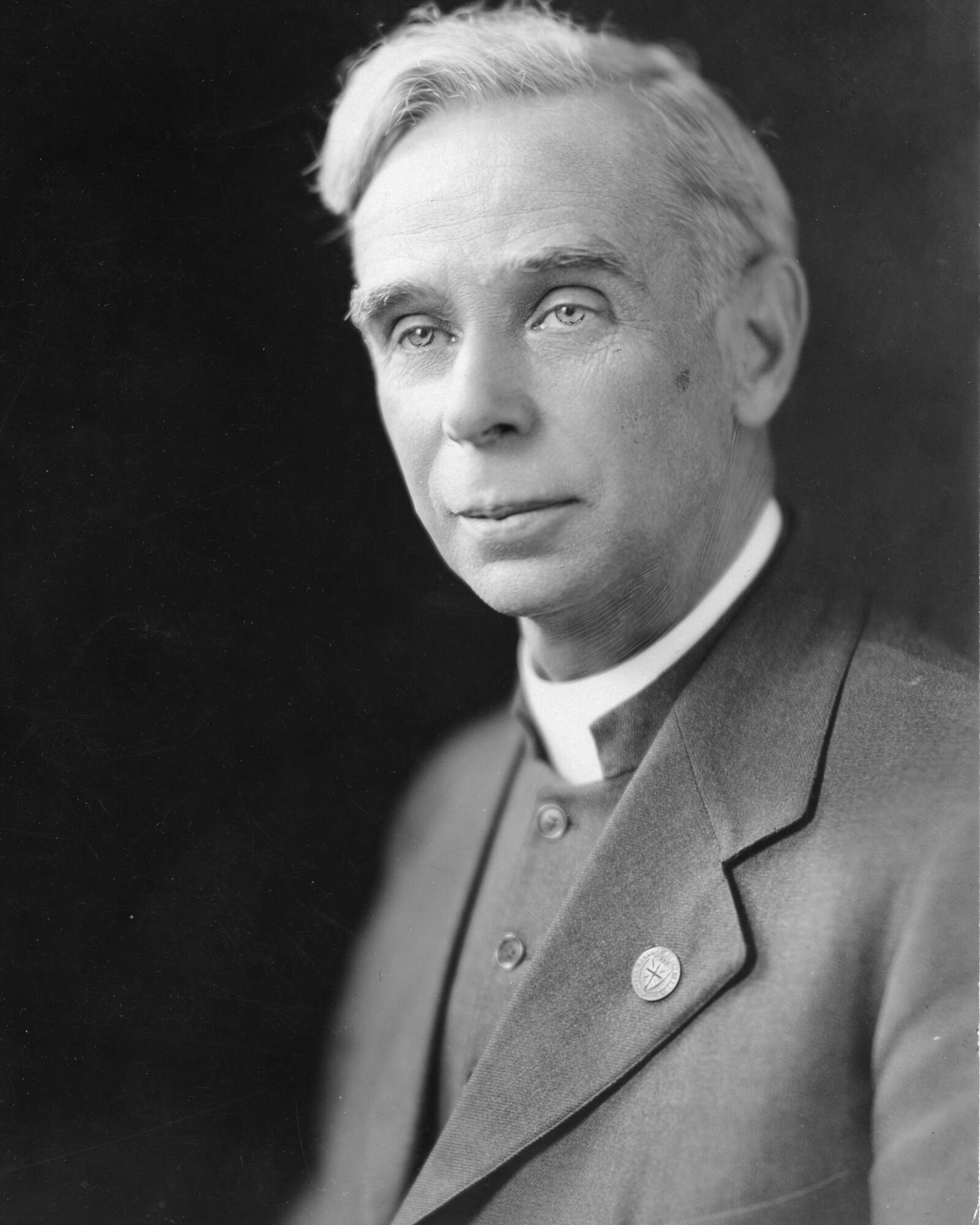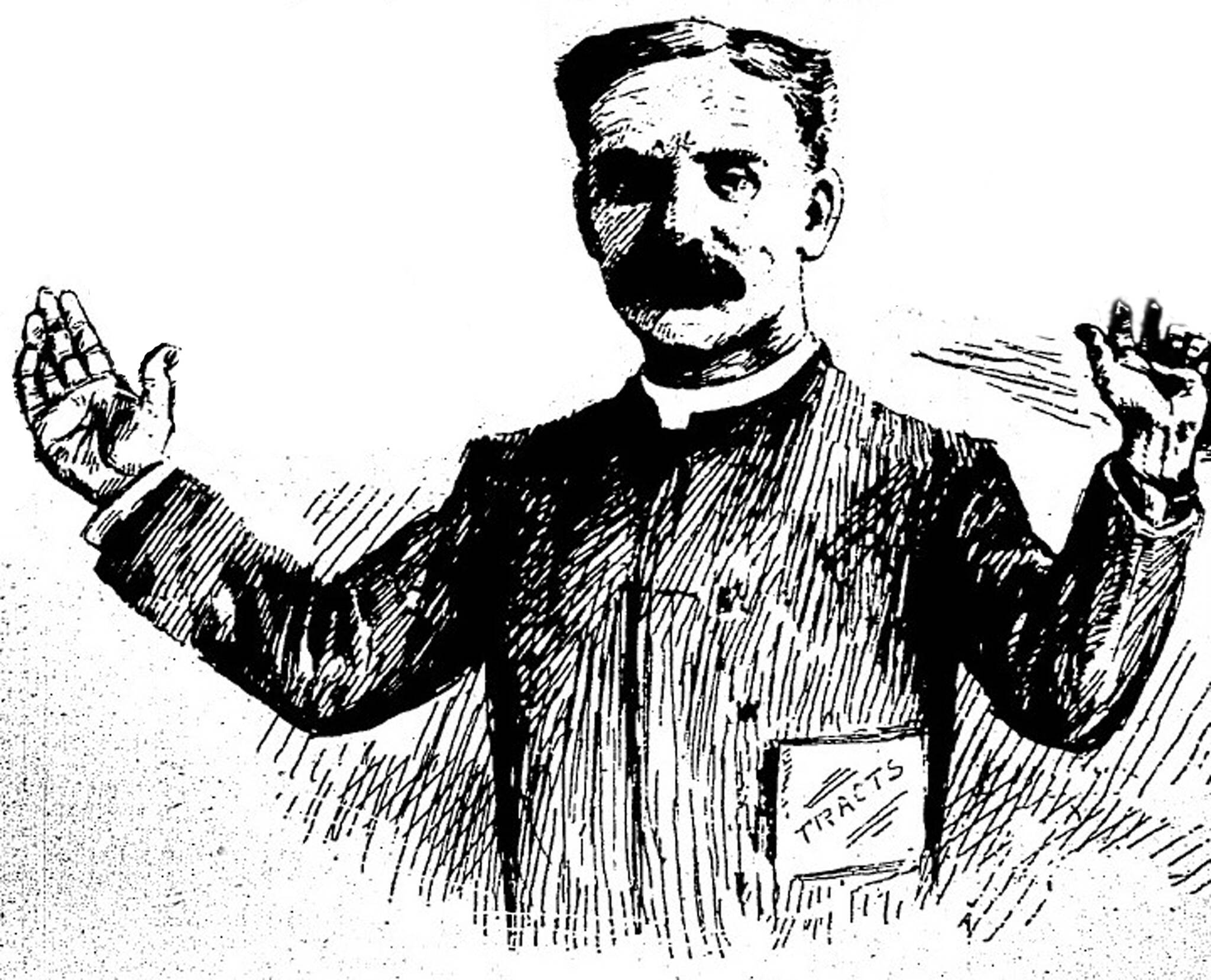I was recently directed to a YouTube link that connected me to “It Happened in Cambridge,” a series of historical vignettes regarding Cambridge, Ontario, created by historian David Menary. The episode was titled “The Story of George Pringle.”
George Pringle Sr. was one of two brothers born in Scotland who left home at an early age, enlisted in the British Army and were shipped to Canada to serve. Upon retiring, George Sr. settled in the area of Galt, Ontario.
Pringle raised 10 children, who eventually spread far and wide across the country and abroad, but in his YouTube presentation, Menary, refers to two sons, George Jr., and John, who both went to the Klondike to serve the Presbyterian Church. A third son, he said, served in the Mounted Police, and a couple of daughters may have been nurses in the Yukon.
I was aware of the three male Pringles, but had never made the connection between the Mountie and the two missionaries. I returned to my files and yes, they appeared to be the brothers mentioned by Menary. A quick scan of source information revealed hundreds of references to members of the Pringle family, so I started digging, and this is what I have learned so far.
In 1898, the Reverend Doctor John Pringle was assigned to service in British Columbia. He took the all-Canadian route to get there. Arriving in Wrangell, Alaska, March 19, 1898, he made his way up the Stikine River to Glenora, in British Columbia, where he was to minister to a district stretching from Glenora north to Teslin Lake. A year later, he was dispatched by dog team to Atlin, where a discovery of gold led to a stampede into the area.

Over the next 2 ½ years, he served the congregation in Atlin, during which time, he led the construction of a hospital. His first religious services were held in local drinking establishments, and he finally set up a large frame and tent structure in which to hold services, but he was never successful in raising the funds to build a proper church. He was reassigned to Grand Forks, Yukon, on Bonanza Creek, the fall of 1901. He remained there until he was reassigned to Dawson in 1906, returning briefly to Bonanza in 1907, before leaving the Yukon for good.
During his time in Atlin, and in the Yukon, he remained active in politics with varying success.
“I shall meddle in politics,” he wrote, “as long as the devil meddles in politics.”
John Pringle was a high-minded preacher, who did not tolerate immoral behaviour. He wrote a constant stream of letters to friends and contacts in Ontario about the low moral standards in the Klondike, which seemed to have some effect in ending gambling in Dawson, and chasing the prostitutes out of town, but he was not successful in shutting down the saloons. He served one term on the territorial council, but did not run for a second term as it was unlikely that he would have been re-elected.
George, John’s younger brother (born March 10, 1873), came to Atlin to assist his brother for two summers, while he was still a student, and followed him to the Klondike, where he was ordained on Aug. 13, 1902 in St. Andrew’s Presbyterian Church. He was posted to the goldfields, where he tended to small congregations at Gold Bottom, Eureka, Last Chance, Gold Run and Sulphur Creeks. Unlike his older brother, George stayed out of politics. He continued this assignment until he was transferred in 1909 to Vernon, B.C.
George Pringle enlisted in the Canadian Expeditionary Force, during World War I, where, he later reported, he told stories to the soldiers about his experiences in the Klondike. These stories were later compiled into a book titled “Tillicums of the Trail.” George continued his ministry in British Columbia until he retired in 1932. He passed away in February of 1949.

Louise Pringle, sister to George and John, also came to the Yukon, where she was teaching school at Gold Bottom in 1903. She travelled with her brother George to Gold Run Creek on a five-dog team to celebrate Christmas, where she was noted to be very popular with the miners, especially because of her good singing voice. In November of 1904, she married Bernard H. Jordan, the co-owner of Claim No. 34A on Gold Run Creek. I have yet to find any evidence of any other siblings having joined them in the North, nor is there any mention made of the nursing profession.
According to records I was able to locate, James, “Jack” Pringle, joined the Northwest Mounted Police in 1891 for a five-year engagement. Records further indicate that he re-enlisted in Skagway in 1898 and was posted to the Dalton Trail. He extended his term for another year in 1900, and was left in charge of the Dalton post detachment that year, presumably until he took his discharge from the force in 1901.
It appears that he remained more or less continuously in the southwest Yukon and near Dalton Post for the next four decades. In 1912, he made application to purchase the detachment buildings at Dalton Post, which had been abandoned by the police, and acquired the buildings the following year. He repaired the log structures and was still living in them during World War II. He married a local First Nations woman named Susie, who had an adopted daughter named Hazel. On July 7, 1939, Hazel married David Hume, son of “Scotty” Hume, another former Mountie who remained in the district. They had several children whose descendants live in the area today.
In the intervening years, Jack Pringle appears to have trapped in the winters and taken on a variety of work available in the district, but by the late 1930s, and advancing in age, he was having difficulty making a living and received some limited support from the territorial government.
Jack Pringle died July 15, 1945 in his cabin at Dalton Post, and was buried not far from his long-time home. I visited the gravesite in 2004; the wooden grave marker was still in good condition, and enclosed by a wooden fence.
The Pringle brothers lived in the Yukon for several years before George and John moved on to other ministries, but the conditions of travel would have made it extremely difficult to see former Mountie Jack. While a member of territorial council, John Pringle made a visit to the Kluane district in early 1903. The newspapers made note of his visit, even mentioning his staking of a claim on the hitherto unknown creek which he and Richard Fullerton explored and named Christmas Creek.
While John Pringle may have been within the same region as Jack, a distance which today could be traveled in four hours by car, the obstacles to getting together at that early date may have been insurmountable. There is no record in the newspapers that the two brothers ever made physical contact, and to date, I have found no evidence that they kept in touch by correspondence. I can only imagine what they might have had to say to each other had they been able to rendezvous.
And therein lies one of the challenges of doing research of this sort. As you uncover historical records, they lead you to ask more and more questions. The quest for the story of the Pringle siblings in the Yukon has just begun.
Michael Gates is Yukon’s first Story Laureate. His latest book, “Hollywood in the Klondike,” is now available in Whitehorse stores. You can contact him at msgates@northwestel.net.
